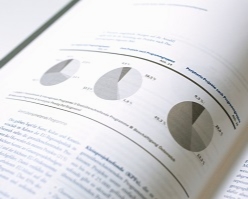ارزیابی تلفات آسیا بر اساس آسیب پذیری زلزله The Quick Assessment Model of Casualties for Asia based on the Vulnerability of Earthquake
- نوع فایل : کتاب
- زبان : انگلیسی
- چاپ و سال / کشور: 2018
توضیحات
رشته های مرتبط مهندسی عمران
گرایش های مرتبط زلزله، مدیریت ساخت
مجله خطرات طبیعی و علوم زمین – Natural Hazards and Earth System Sciences
دانشگاه Key Laboratory of Environmental Change – Beijing Normal University – China
گرایش های مرتبط زلزله، مدیریت ساخت
مجله خطرات طبیعی و علوم زمین – Natural Hazards and Earth System Sciences
دانشگاه Key Laboratory of Environmental Change – Beijing Normal University – China
Description
1 Introduction Earthquake disaster is the natural disaster that causes the most of death toll. Population vulnerability of earthquake refers to 20 the situation caused by earthquake that affects the probability and the extent of damage (Pelling et al., 2004). With continuous growth of global population and large-scale urbanization, the threat to human safety from earthquake will be larger. Our technological level is not advanced enough to accurately predict the earthquake, but we can study the earthquake from the following two aspects, so the casualties caused by the earthquake could be reduced as much as possible. First, vulnerability assessment of earthquake disaster should be done well before the earthquake, and the construction of disaster 25 prevention and reduction system should be strengthened in the regions with relative high vulnerability of population. Second, casualties should be estimated rapidly after the earthquake, and according to the estimated results, the reasonable rescue measures would be deployed to carry out the effective rescue. Although there are essential differences between the two aspects, they are both needed to work based on rapid earthquake casualty and loss modelling. Samardjieva and Badal (2002) considered that the number of earthquake casualties should be positively correlated with magnitude, despite affected by many factors. They analysed earthquake data with focal depths of less than 60 km globally in the 20th century and established a logarithmic-linear model of population density between death toll and magnitude. Based on the casualty rate (injuries/deaths) and the logarithmic-linear relationship of magnitude, Christoskov and Samardjieva 5 (1984) assumed that the prediction of death toll was close to the expected accuracy, then they calculated the number of injuries by the number of deaths. Similarly, Nichols and Beavers (2003) used magnitude as an indicator of ground motion intensity. By analysing the earthquakes that took place in the 20th century such as Messina earthquake in 1908, Avezzano earthquake in 1915 and Tangshan earthquake in 1976 etc., they created a threshold curve of death toll about the magnitude in the earthquake. This threshold curve was suitable for estimating the maximum of death toll caused by an earthquake in or around the city.


